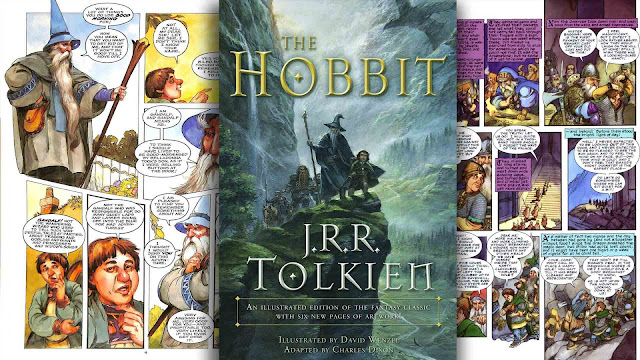adapted by Charles Dixon
illustrated by David Wenzel
1990 / 133 pages
There's a hierarchy so unfailingly true it could be carved into stone: the book is always better than the movie, and the movie is always better than the graphic novel adaptation.
But I am here to tell you that this otherwise unfailing rule does have an exception! I'm not going to start talking all crazy and tell you that this comic is better than the book – that has never been and never will be! – but it is better than the film! It is even better than many a book, paling in comparison only to its original source material.For those unfamiliar with the epic tale, this is the story of Bilbo Baggins, the titular hobbit, and a hobbit is basically human-like, though half the size and with at least twice the hair on their feet. Hobbits are homebodies so Biblo isn't exactly sure how he joined a dwarfish expedition to steal back their treasure from an enormous talking dragon. Small though he might be, Biblo is big in character, and though he doesn't think himself brave, in meeting up with trolls, goblins, giant spiders, and, of course, an even bigger dragon, he ends up doing many a brave thing. It's a good old-fashioned epic tale, with good, eventually, triumphing over evil...but not without paying a price.
That's the original, and the 133 pages of this graphic novel adaptation give this the space to capture it all. And illustrator David Wenzel has given this a classic look for this classic tale - there's a reason that in the 30 years since this first came out, no one has even attempted to improve on it.
Its size and depth mean this isn't for the casual comic fan, but for fantasy fans 14 and up, this will be such a treat!




